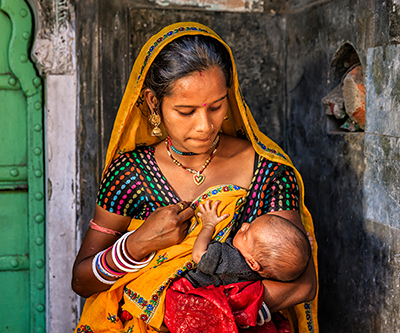
NICHD supports research and training in areas outside the United States. In 1998, it established the Office of Prevention Research and International Programs, a precursor to its current Office of Global Health, which partners with several organizations to promote NICHD’s global health mission.
In 2001, NICHD partnered with the Bill & Melinda Gates Foundation to start the Global Network for Women’s and Children’s Health Research. This public–private partnership, which continues today, supports and conducts clinical trials in resource-limited countries by pairing U.S. investigators with senior researchers in different countries.
Network researchers evaluate low-cost, sustainable interventions to improve maternal and child health while building local research capacity and infrastructure. Studies examine new, evidence-based treatments and innovative uses of proven treatments for pregnant women and infants.
Some findings from Global Network researchers include the following:
- The drug misoprostol greatly reduces a fatal pregnancy complication called postpartum hemorrhage, or severe blood loss after childbirth, in India and other low-resource countries. Giving oxytocin to women who delivered vaginally also helped to prevent postpartum hemorrhage in these settings.
- Helping Babies Breathe®, a program to educate skilled birth attendants in neonatal resuscitation, can significantly reduce infant deaths from perinatal asphyxia, a lack of oxygen to the brain in the moments before, during, and after birth.
- An inexpensive, daily nutritional supplement taken before conception or in early pregnancy may improve fetal growth in rural areas.
In addition, NICHD-funded researchers in Uganda found that a two-drug regimen dramatically reduces the severity of malaria during pregnancy and provides a treatment alternative for areas where the malaria-causing parasite Plasmodium falciparum has grown resistant to standard treatment. The World Health Organization reports that 430,000 people died from malaria in 2017,1 with pregnant women and children younger than 5 years of age among the groups at highest risk for death and severe health problems. Other NICHD research identified the mechanism used by P. falciparum to obtain nutrients from red blood cells. The findings may lead to the development of new drugs that block this transport, effectively “starving” the parasite.
 BACK TO TOP
BACK TO TOP